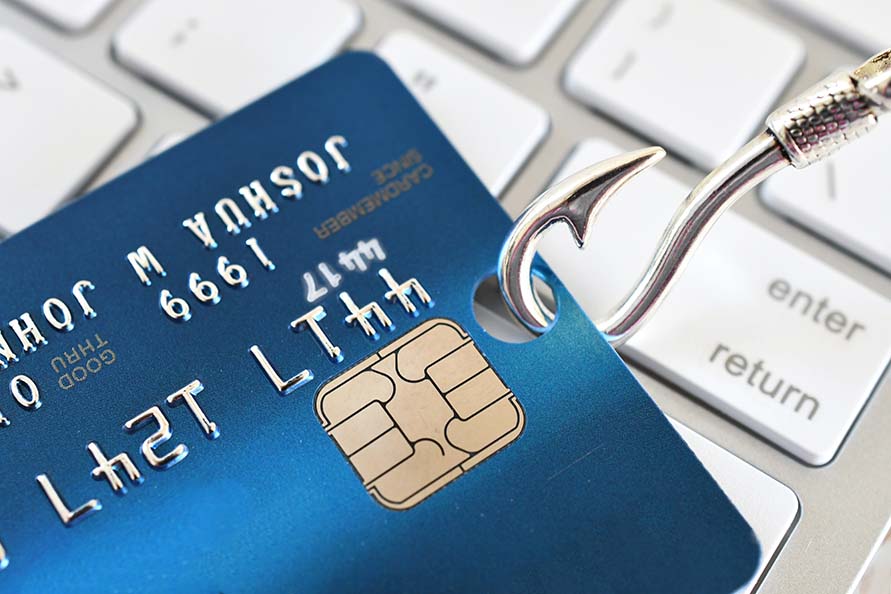 Identity theft isn’t a new phenomenon; however, the face of identity theft has changed dramatically. Over the years it’s evolved with the technology and economic landscape that surrounds it. Understanding your exposure and staying informed of the trends and methods that thieves use to steal from you is the first step in a strong defense against identity theft.
Identity theft isn’t a new phenomenon; however, the face of identity theft has changed dramatically. Over the years it’s evolved with the technology and economic landscape that surrounds it. Understanding your exposure and staying informed of the trends and methods that thieves use to steal from you is the first step in a strong defense against identity theft.
Getting a hold of your information isn’t as complicated as you might think. In fact, much of your personal identifiable information (PII) could be publicly available online or through public records such as court documents.
Top of our list is: IMPOSTER SCAMS. Fraudsters may pose as a professional from a bank, the IRS, a utility company, a charity, or another reputable institution in an attempt to gather PII directly from you. These scams often rely on a sense of urgency, insisting that you must send funds immediately. Remember to take a moment when you receive a call like this and ask yourself if the urgency makes sense
A close second on the list: PHISHING. Similar to an imposter scam, phishing involves emails that appear to be sent from a reputable company in an attempt to gather information from you directly. A phishing email might redirect you to a form to fill out or ask you to reply with PII such as account numbers, your social security number, or other sensitive information. These emails can be difficult to spot, but they often contain vague greetings such as “dear valued customer.”
A common theft trick is: SHOULDER SURFING. Some thieves may use a camera or binoculars to obtain your card information and PIN as you use an ATM or input information online. Covering the keypad whenever you input your PIN is a simple measure that can protect you when you use ATMs, pay for gas, or withdraw cash at the grocery store.
Thieves aren’t just after wealthy adults either. More than 1.3 million children are victims of identity theft annually and 50% of these children are under 6 years old.1
Once your PII is stolen, it can be used illegitimately in many ways costing you time and money to rectify. Protect yourself by being discrete, aware, and organized. Don’t share personal information or passwords electronically and especially over public computers and WiFi. With nearly 29% of hacking-related events stemming from stolen passwords2, you need to create diverse passwords. Finally, keep your software up-to-date and antivirus software installed on all your computers for tight security.
Should you fall victim to identity theft:
- Report the incident to the fraud department of the three major credit bureaus and ask for a hold to be placed on your credit
- Contact the fraud department of each of your creditors
- Contact your bank or financial institution
- Report the incident to law enforcement
- Click here to download and print materials
Risk is a part of the world we live in. We may not be able to avoid it completely, but if you stay informed you can stay a step ahead. We’re happy to help you implement any necessary measures to help protect your PII. Contact us today at (540) 720-5656.
Adapted from Hosting Tribunal1
Adapted from LastPass2
Adapted from FIG MarketplaceOne3



 Amy Anderson joined the ILG Financial team in 2023 as the client relations coordinator. Her responsibilities include scheduling of appointments, annual check-up notifications, and annuity and required minimum distribution assistance. She is a graduate of Harding University with a degree in Computer Information Systems. Amy and her husband have two children and she enjoys reading, crocheting, music and spending time with her family.
Amy Anderson joined the ILG Financial team in 2023 as the client relations coordinator. Her responsibilities include scheduling of appointments, annual check-up notifications, and annuity and required minimum distribution assistance. She is a graduate of Harding University with a degree in Computer Information Systems. Amy and her husband have two children and she enjoys reading, crocheting, music and spending time with her family. Chase Lopez joined the ILG Financial team in 2020 as an advisor. Chase is a 2016 James Madison University graduate with a degree in management. Chase has been trained under the tutelage of Dave Lopez, who is not only the founder and managing member of ILG Financial, but also is Chase’s uncle and godfather. He also enjoys working alongside his cousin, Megan, who is Dave’s daughter. Chase, as a fiduciary, believes in putting his clients interests first, and building out plans for his clients where they can have a happy and fruitful retirement. He married his beautiful wife in February 2022 and both use most of their free time chasing around their little pup, Aurora.
Chase Lopez joined the ILG Financial team in 2020 as an advisor. Chase is a 2016 James Madison University graduate with a degree in management. Chase has been trained under the tutelage of Dave Lopez, who is not only the founder and managing member of ILG Financial, but also is Chase’s uncle and godfather. He also enjoys working alongside his cousin, Megan, who is Dave’s daughter. Chase, as a fiduciary, believes in putting his clients interests first, and building out plans for his clients where they can have a happy and fruitful retirement. He married his beautiful wife in February 2022 and both use most of their free time chasing around their little pup, Aurora. Jessica Carson joined the ILG Financial team in 2018 as an agent. Jessica and her husband have four children, two dogs, 3 barn cats, 5 chickens, and three parakeets. She indeed loves her children and pets! When not at work, Jessica enjoys playing the piano and cello as well as traveling and spending time outside with her family, hiking, fishing, and boating.
Jessica Carson joined the ILG Financial team in 2018 as an agent. Jessica and her husband have four children, two dogs, 3 barn cats, 5 chickens, and three parakeets. She indeed loves her children and pets! When not at work, Jessica enjoys playing the piano and cello as well as traveling and spending time outside with her family, hiking, fishing, and boating. Terri Center joined the ILG Financial team in 2019 as client services manager. She handles client records, application processing, and gathering information to provide a professional and friendly experience with all of our clients. Terri is a graduate of Oakland University. She is married and has two children. She enjoys hiking, family time, and puzzle challenging video games. She also likes to share her creativity in her canvas paintings and sewing projects.
Terri Center joined the ILG Financial team in 2019 as client services manager. She handles client records, application processing, and gathering information to provide a professional and friendly experience with all of our clients. Terri is a graduate of Oakland University. She is married and has two children. She enjoys hiking, family time, and puzzle challenging video games. She also likes to share her creativity in her canvas paintings and sewing projects. Megan Jones joined the ILG Financial team in 2020 as marketing director. Megan and her husband live in Fredericksburg, VA with their German Short Haired Pointer, Gus. Megan is a graduate of Longwood University and holds a degree in communications. Megan is the oldest of Dave Lopez’s three children and not only enjoys working alongside her father, but also with her cousin, Chase, who joined the ILG Financial team in 2020 as an advisor. When not at work, Megan enjoys sitting on the back porch with family and friends enjoying food and music.
Megan Jones joined the ILG Financial team in 2020 as marketing director. Megan and her husband live in Fredericksburg, VA with their German Short Haired Pointer, Gus. Megan is a graduate of Longwood University and holds a degree in communications. Megan is the oldest of Dave Lopez’s three children and not only enjoys working alongside her father, but also with her cousin, Chase, who joined the ILG Financial team in 2020 as an advisor. When not at work, Megan enjoys sitting on the back porch with family and friends enjoying food and music.